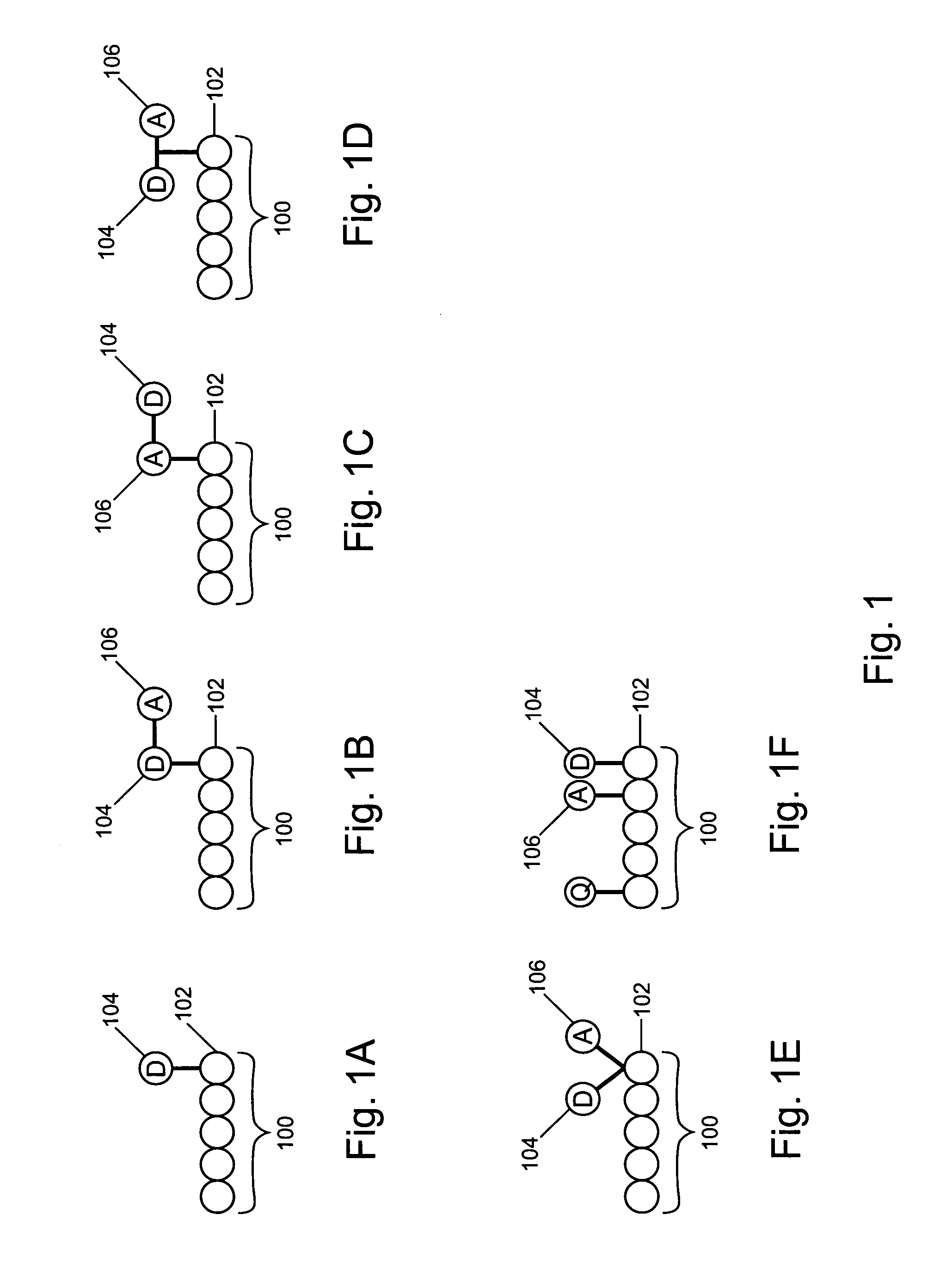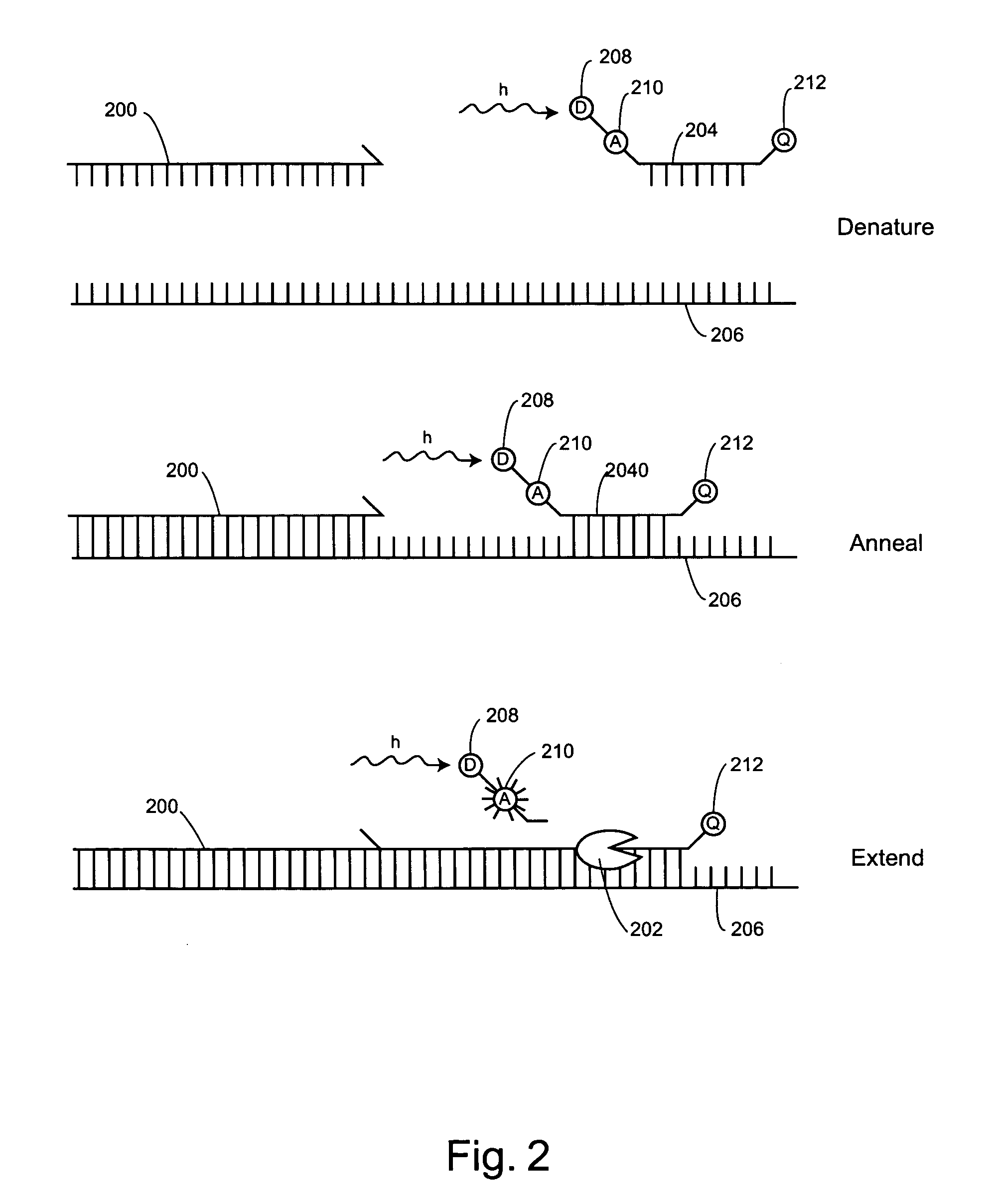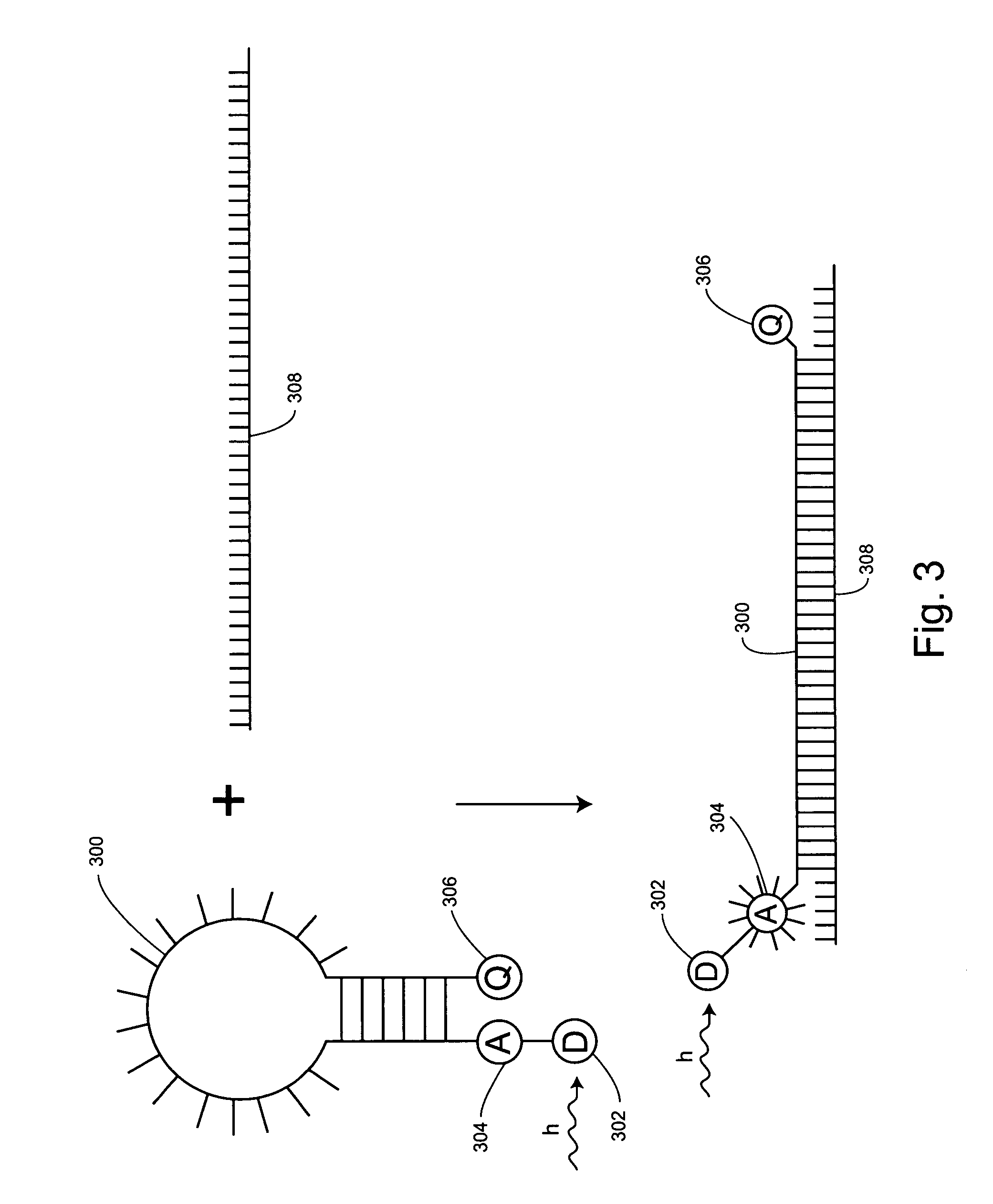Non-fluorescent energy transfer
a technology of non-fluorescence and energy transfer, which is applied in the field of molecular biology and biomolecule chemistry, can solve the problems of reducing the detection sensitivity and dynamic range of assays, and generally adversely affecting the performance of assays, and achieves the effect of reducing background fluorescen
- Summary
- Abstract
- Description
- Claims
- Application Information
AI Technical Summary
Benefits of technology
Problems solved by technology
Method used
Image
Examples
examples
[0233] It is understood that the examples and embodiments described herein are for illustrative purposes only and are not intended to limit the scope of the claimed invention. It is also understood that various modifications or changes in light the examples and embodiments described herein will be suggested to persons skilled in the art and are to be included within the spirit and purview of this application and scope of the appended claims.
example i
Comparisons of Detected Fluorescence
[0234] This example shows fluorescent emissions that were separately detected from oligonucleotides labeled with fluorescent moieties and oligonucleotides labeled with substantially non-fluorescent moieties in different samples. In particular, FIG. 10 is a graph of overlaid spectra obtained from excitation and emission scans of oligonucleotides labeled with 6-carboxyfluorescein (6-FAM), 4′,5′-dimethoxy-5-carboxyfluorescein (5-DmF), or 4′,5′-dimethoxy-6-carboxyfluorescein (6-DmF). The ordinate of the graph shown in FIG. 10 represents absolute fluorescence, while the abscissa represents wavelength (nm). As shown, the plot for an excitation scan of 6-FAM labeled oligonucleotides obtained at 515 nm is labeled “6-FAM ex”, whereas the plot for an emission scan of 6-FAM labeled oligonucleotides obtained at 493 nm is labeled “6-FAM em”. The plot for an excitation scan of 5-DmF labeled oligonucleotides obtained at 545 nm is labeled “5-DmF ex”, whereas the...
example ii
Synthesis of Biopolymer Synthesis Reagents
[0235] This example describes a representative synthesis pathway for biopolymer synthesis reagents that comprise substantially non-fluorescent donor moieties. In particular, synthetic schemes for 5- and 6-dimethoxyfluorescein-DMT-CX-Linker-phosphoramidites are described in this example according to one embodiment of the invention. As an overview, FIG. 12 schematically illustrates certain steps in this synthetic scheme.
Synthesis of 5 and 6-Dimethoxyfluorescein (DmF) isomers
[0236] The synthesis of DmF was performed according to the procedure of U.S. Pat. No. 4,318,846, entitled “NOVEL ETHER SUBSTITUTED FLUORESCEIN POLYAMINO ACID COMPOUNDS AS FLUORESCERS AND QUENCHERS,” issued Mar. 9, 1982 to Khanna et al. After the work-up, the product was purified by column chromatography. As shown in FIG. 13 (ordinate represents absorbance units, abscissa represents retention time (minutes)), the HPLC analysis of purified DmF showed two peaks due to posit...
PUM
| Property | Measurement | Unit |
|---|---|---|
| Nanoscale particle size | aaaaa | aaaaa |
| Concentration | aaaaa | aaaaa |
| Absorbance | aaaaa | aaaaa |
Abstract
Description
Claims
Application Information
 Login to View More
Login to View More - R&D
- Intellectual Property
- Life Sciences
- Materials
- Tech Scout
- Unparalleled Data Quality
- Higher Quality Content
- 60% Fewer Hallucinations
Browse by: Latest US Patents, China's latest patents, Technical Efficacy Thesaurus, Application Domain, Technology Topic, Popular Technical Reports.
© 2025 PatSnap. All rights reserved.Legal|Privacy policy|Modern Slavery Act Transparency Statement|Sitemap|About US| Contact US: help@patsnap.com



